The Virgin is depicted standing, holding the infant Jesus on her left side, seated on her arm. He is dressed in an ample green cloak, with a serene, doll-like face and golden hair, finely curled at the ends.
Mary is wearing a red cloak with deep, skilfully sculpted folds. Her dress features a round collar and a wide, high belt, punctuated with ressortissant buttons. She wears a gilded crown, openwork and set with precious stones.
Long, thick, wavy golden hair frames her sloping face and flows down her body to her hips. The face, with its well-defined eyelids, unobstructed forehead, small chin, fine mouth with well-formed lips and pleasant smile, and almond-shaped eyes in the Gothic style, is of great finesse. We also note the pointed representation of her foot, another element typical of this style.
His hands are finely sculpted, with long, delicate, elegantly articulated fingers. They are unmistakably realistic, with particular attention paid to the interplay of the metacarpophalangeal joints, abandoning the softness of the earlier hands for a firmer, more structured expressiveness.
We also note the delicacy of the Virgin's gesture supporting the Child, a testament to the artist's own finesse of execution.
The drapery breaks at the end of the sculpture in a sweeping movement, quite different from the Parisian schools of the time, which treated the fabric in a broad parallelism, barely swollen with swirls. Here, we see the broken folds and overlapping beaks of dry fabric.
This statue has extraordinary and unusual dimensions. It has been cleaned to preserve, protect and embellish it. Traces of tools are still visible, however, as are the original gilding and polychromy. The Infant Jesus has a missing shoulder and a damaged hand.
We are witness to a certain solemnity, almost geometric, in the physical composition. Indeed, the shortening of the lower part of the body is noticeable, particularly in the Virgin's legs. In addition, the Virgin's face, with its low forehead, has a pronounced bone structure, particularly around the cheekbones and temples, giving the whole an air of authority and gravity.
The gilded orphreys adorning the Virgin's garment are extremely rich. An orfroi is a richly embroidered band of gold or silver, used to decorate chaps, chasubles and dalmatics. These orfrois are found at the ends of the Virgin's garment, all along her cope, and at the ends of her dress. They can also be seen on the collar and handles of her cloak, as well as on the inside of the fabric lapels. They are of exceptional refinement, worked both right-side-up and upside-down, a testament to the meticulous, diligent work of a master sculptor.
Our Virgin and Child is close to 15th century Bourbonnais sculptures, notably those by Michel Colombe and Jean de Chartres, which are characterized by a great expression of delicacy and serenity. Renowned artists such as Jean de Chartres and Michel Colombe were present in the Bourbonnais region at this time, and the style of our sculpture bears witness to the influence of one of their workshops.
Artistic influences between Burgundy and the Bourbonnais region cannot be ignored, as their geographical proximity favors stylistic borrowings. This statue perfectly illustrates this connection, combining a Bourbonnais style with Burgundian-Flemish influences, inherited from Jean de la Huerta and continued by Antoine le Moiturier.
In fact, exchanges were frequent in this period, with art spreading and evolving through the proliferation of exchanges. There was a strong tendency for artists to travel to learn from schools in other regions, or to set up their own schools.
Our sculpture, at the crossroads of the artistic styles of its time, charms the beholder with its important testimony to a mother's love for her child.
The Virgin and Child is a universal symbol of tenderness and spirituality, occupying a central place in the history of art from its origins to contemporary interpretations. This emblematic figure has evolved to reflect the styles and sensibilities of each era.







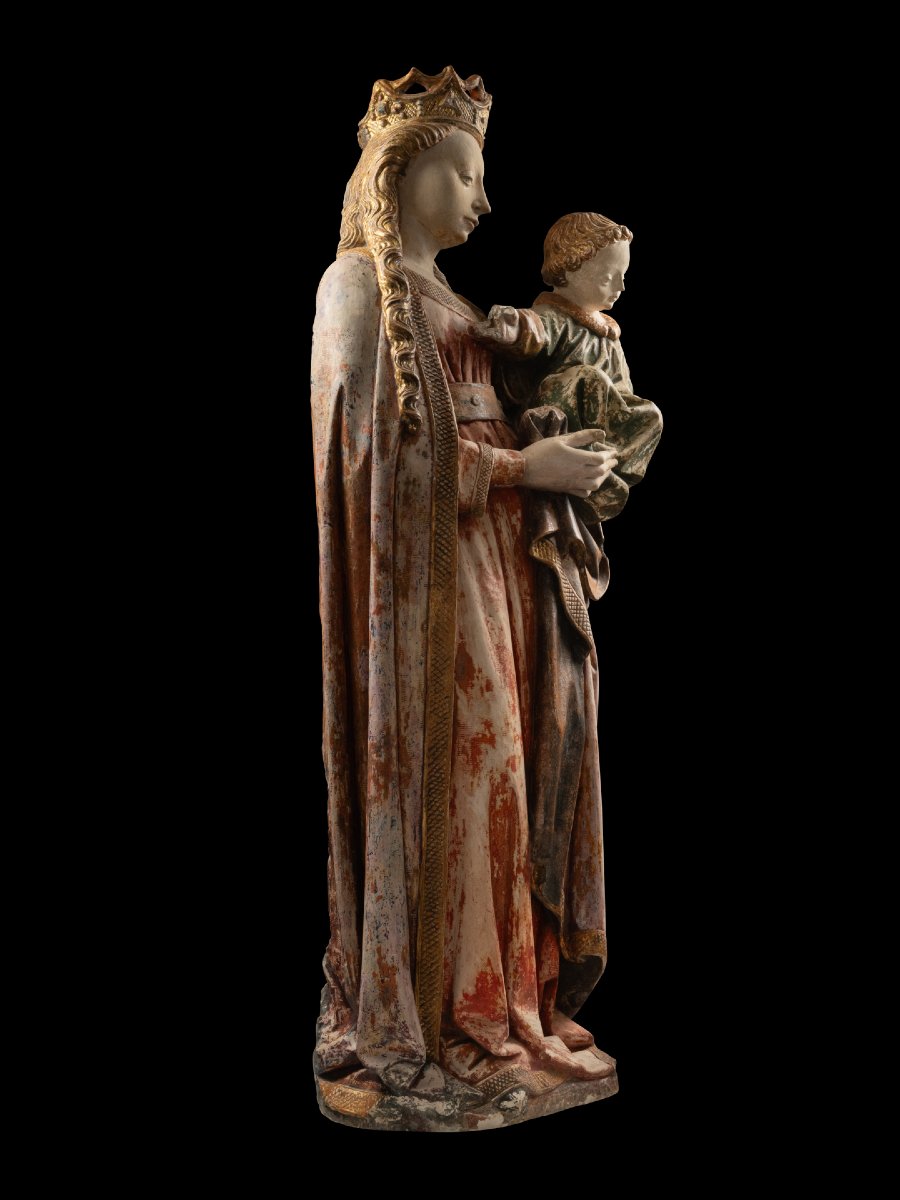



















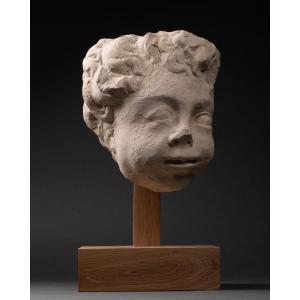




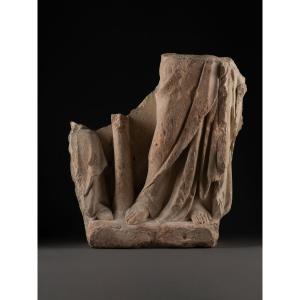
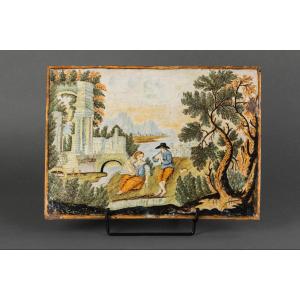


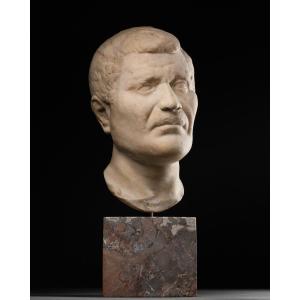






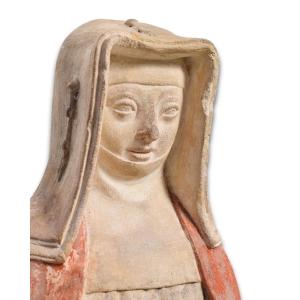






 Le Magazine de PROANTIC
Le Magazine de PROANTIC TRÉSORS Magazine
TRÉSORS Magazine Rivista Artiquariato
Rivista Artiquariato